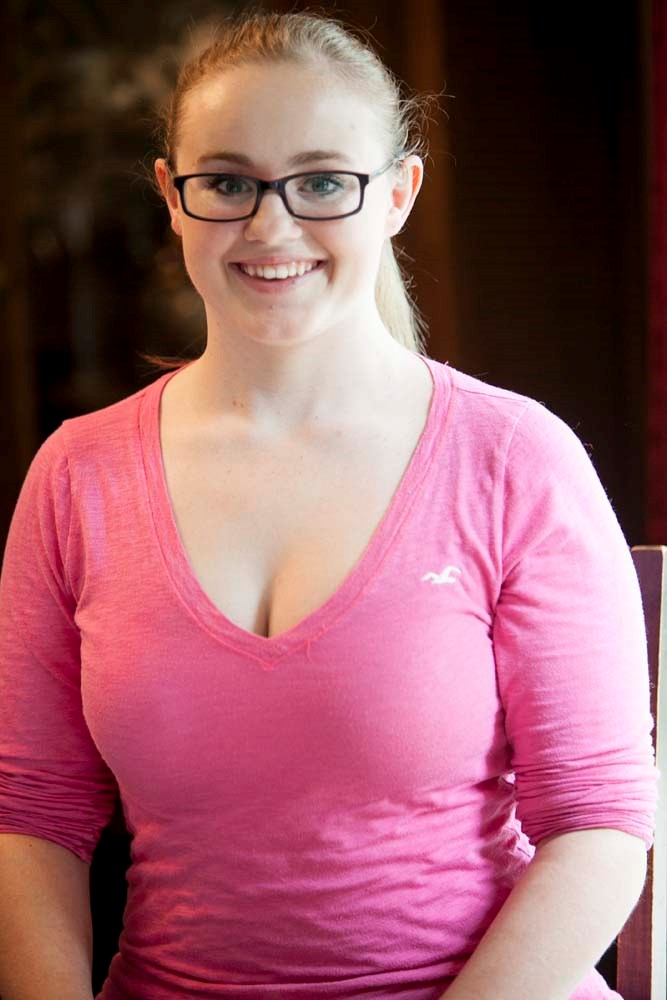To 16-year-old Cadence Wenc McIntyre of Olds, the persistent headaches she experienced since infancy were a fact of life.
To 16-year-old Cadence Wenc McIntyre of Olds, the persistent headaches she experienced since infancy were a fact of life. But nobody could have imagined they'd eventually result in stitches running from the back of her skull down to the base of her neck.
It wasn't just headaches. Cadence also had earaches, hearing loss in one ear, trouble balancing, and her limbs would go numb and tingly.
"I have a list, if you want a list," the upbeat teenager said.
That list details the symptoms associated with the Chiari-malformation, a brain condition Cadence was diagnosed with in February, where part of the cerebellum sinks into the spinal column and becomes compressed.
If left untreated, effects can worsen, to seizure disorders or paralysis, according to Cadence's pediatrician, Dr. Michael From.
Despite the discomfort, Cadence toughed it out, not knowing she had the malformation. She participated in softball, figure skating, ballet and jazz dance over the years — all while maintaining honour roll grades at school.
It wasn't until she suffered a concussion in February, after a fall from figure skating, that Cadence got a CT scan, revealing the Chiari-malformation.
On Aug. 21, Cadence underwent surgery at the Foothills Medical Centre, where she stayed two nights before being transferred to the Alberta Children's Hospital.
The procedure was performed by Dr. Walter Hader — a neurosurgeon — and involved removing a piece of Cadence's skull and spinal column to make room for her brain. Metal rods were also put into her neck to fuse her skull to her neck.
"So it's like a blessing in disguise because we'd been going to doctors my whole life and they're like, well she's just making all this stuff up. It's not true. She's just doing this all for attention," she said.
Cadence was discharged from hospital on Aug. 28 but she's not finished with the Chiari-malformation.
While the surgery can relieve many symptoms, it's not a cure, and Dr. From said additional operations might be required in some cases.
Dr. Frohm said many doctors only discover the condition after patients require a CT or MRI scan after a car accident or athletic injury.
"Even though the patients have symptoms, they're often so non-specific that a lot of doctors don't pick up on it," he said.
Doctors were not the only ones who couldn't figure it out.
Cadence, an Olds High School student, said peers spread rumours that it was all a fabrication — that she was actually out and partying.
This coincided with the worsening of symptoms following her concussion, resulting in her missing months of school, which irked teachers who could not see that she had a medical condition, she said.
According to her mother Tara-Jean Wenc, Cadence's grades dropped "significantly" and teachers refused to provide accommodation.
Wenc has a background in education and has worked as a disability services faculty member at post-secondary institutions. She said the school could have assigned homework for Cadence to keep up, as she was unable to attend classes.
"There is a duty to accommodate under the Canadian Charter of Rights and Freedoms and (in) the Canadian Human Rights Code, there is a duty to accommodate up to the point of undue hardship," Wenc said. "Well, teachers providing homework for her to work on because she's in too much pain to go to school is not undue hardship."
According to Sandy Bexon and Kurt Sacher, communications officer and superintendent respectively for Chinook's Edge School Division, neither could comment specifically on Cadence's situation.
But in general terms, Sacher said the school division has support services in place to assist students, whether they have a disability that's visible or not.
All students with complex needs have access to individual program plans that are developed collaboratively with parents and can include remote learning, he said.
Sacher adds that the division's student services team has resources for teachers with questions about their students.
"Every teacher, as they develop initially, is made aware of students with really complex needs," he said. "There's always a need to go even deeper and that's why as a system, we go further with some of these systemic supports."
If parents have concerns with staff, the division has a protocol in place, Sacher said.
Cadence said she isn't worried about the teachers but wanted a mea culpa from some of her fellow students and now former friends.
"I want an apology from the students because there was nasty stuff going around about me and I just don't enjoy that," she said.
"I told her that there had been an awful lot of praying happening for the months leading up to the surgery," Wenc said. "But she had the best surgeon possible. Dr. Hader is renowned and is tops. So that helped alleviate some of the worry."
Wenc said her daughter faces a lifetime of doctors' checkups and months of physiotherapy ahead to regain mobility in her neck, which now has a range of motion of 10 per cent.
Contact sports are out of the question and so is anything where there's a risk of falling.
It's a lifetime of change for Cadence, who said she was frustrated at being unable to do the things she did before.
However, you wouldn't know it by talking to the teenager, whose recollection of events was accompanied by a laugh each step of the way.
"I'm just glad it's been dealt with," Cadence said. "I try to be positive about pretty much everything."
[email protected]
